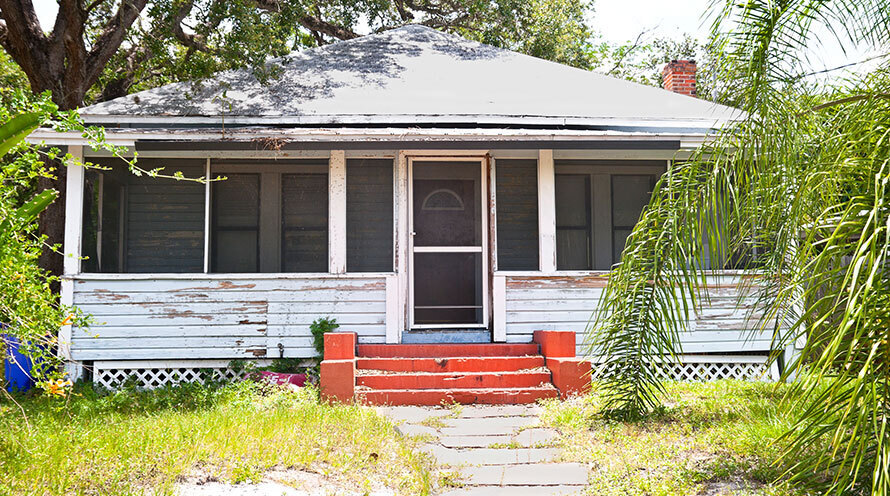Colorado Hazard Control Offers Valuable Insights on Asbestos Awareness, Key Warning Signs & Essential Tips to Stay Safe
Signs Your Home or Commercial Building Contains Asbestos
Denver, Colorado, Oct. 20, 2024 (GLOBE NEWSWIRE) — As a general abatement contractor, the most common question we get from potential clients is how they can identify asbestos-containing building materials in their homes or commercial buildings. While only professional testing and analysis can definitively identify this dangerous material, there are visual indicators homeowners and building managers can look for.
Unsurprisingly, the State of Colorado Air Pollution Control Division (APCD) does not accept visual inspections as evidence of the presence or absence of asbestos. In fact, they err on the side of caution, so to speak, assuming all unsampled building materials contain asbestos, regardless of visual indications or building age.
Consequently, what this article provides is simply helpful information for people concerned about the possibility of asbestos in their homes or other environments. Ultimately, spotting the key markers we have explained below should support what is already a wise decision: having an asbestos inspection company test and report on a property’s building materials.
What Is Asbestos?
Any conversation about asbestos-containing building materials should start with an understanding of what this substance is. Asbestos is a naturally occurring mineral manufacturers added to building products to capitalize on its helpful properties, including:
- High tensile strength
- Fire and corrosion resistance
- Non-conductive characteristics regarding heat and electricity
- Acoustical insulation
These features made asbestos popular in fireproofing materials, plaster, and drywall muds, as well as in pipe, boiler, and wire insulations. Fortunately, as experts learned of the health risks asbestos poses, U.S. manufacturers stopped using it. However, asbestos-containing building materials linger in many older homes and commercial buildings and are dangerous in general, but especially when released by construction or renovation activities.
Asbestos in Insulation
The simplest indicator of the possible presence of asbestos-containing building materials is the structure’s age. Asbestos was widely used in construction materials from the 1930s through the late 1970s. If your home or building was constructed before 1980, there is a higher likelihood asbestos-containing materials were used. It could be present in several areas, including roofing materials, insulations, resilient floor coverings, plaster and drywall texture and joint compounds, siding, and HVAC ducting.
One of the most common places to find asbestos is in the insulation around boilers, pipes, and furnaces. These insulations take various forms, including paper-like cardboard wrappings, cement sheets, gray/white fluffy and crumbly wrappings, or plaster-like coatings. Over time, heat, vibration, and general wear can cause these insulations to deteriorate, potentially releasing harmful asbestos fibers into the air. Consequently, we advise people to monitor insulations for signs of deterioration.
Builders also used asbestos to insulate HVAC ductwork to help prevent heat loss and increase fire resistance. As these ducts age and deteriorate, the insulation can break down, particularly at the joints or seams. This deterioration is especially problematic when the HVAC system is used, as the airflow creates exposure risk throughout the building.
Another common use of asbestos for insulation purposes is in loose vermiculite insulation. Vermiculite looks like kitty litter and can be found in attics or cinder block walls. If you notice loose-fill vermiculite insulation leaking out of wall or floor seams, it is crucial not to disturb the material (including by vacuuming it) until experts like ours can perform testing to determine if asbestos is present. If it is crumbling, breaking apart, or shedding fibers anywhere in a home or building constructed before 1980, this is a red flag.
Asbestos in Flooring
Asbestos was a common additive in vinyl flooring products, particularly floor tiles manufactured from the 1950s through the late 1980s. It enhanced the durability and fire resistance in vinyl tiles and the adhesive used to install them. If your home or commercial property has vinyl flooring and you suspect it is decades old, it warrants closer (but careful) inspection. This is especially true with 9×9-inch tiles as this size was stylistically desirable and common in the era, but remember even 12×12-inch tiles have been found to contain asbestos.
As asbestos-containing flooring becomes worn or damaged, it can release asbestos fibers. Activities like sanding, scraping, or replacing old tiles can also disturb the material and cause asbestos fibers to become airborne.
In addition, asbestos was used in linoleum sheet flooring and its adhesive. Especially if they were installed before 1990, these floor coverings may contain asbestos. As with floor tiles, linoleum sheets often become more fragile with age, leading to cracks, tears, or other forms of damage and an increased likelihood of shedding asbestos fibers.
Asbestos in Wall Materials and Ceilings
Before it was outlawed, asbestos was a common additive in wall materials like plaster, drywall texture, and the joint compounds used to create smooth seams. If your home or building was constructed before the mid-1980s and the walls are showing signs of cracking, deterioration, or damage, there is a chance asbestos is present. Asbestos was also commonly used in ceiling treatments, including the textured or “popcorn” ceilings popular from the 1950s through the 1980s.
Unfortunately, it is impossible to detect asbestos visually in plasters, muds, and other wall and ceiling work products. Asbestos-containing and asbestos-free materials look exactly the same. Consequently, if you suspect your home or building has features installed before 1980, you should talk with an asbestos expert, especially if you are considering or planning any demolition or construction work.
Asbestos in Cement
The final place you may find asbestos in a home or other structure is in the concrete. Asbestos-containing cement products were widely used in roofing, siding, soffits, and gutters due to their durability and resistance to fire and weather. These materials, which were especially common in commercial buildings, garages, and industrial settings, typically appear in corrugated or flat sheet form. In homes, asbestos cement was frequently used as siding.
If a structure has old, weathered, or broken roofing or siding with a cement-like appearance, the material may contain asbestos. If it does, the risk of asbestos fibers becoming airborne increases as the material ages and cracks.
Don’t Risk Prolonged Exposure to Asbestos
While it is impossible to conclusively determine the presence or absence of asbestos without professional testing, understanding when and where it is more likely to exist is helpful. The age of a structure is the first indicator to consider, with those built before 1980 having an increased likelihood of using asbestos-containing materials.
It is also crucial to understand how the deterioration of building products containing asbestos affects health risks. When materials crack, crumble, or disintegrate, they can release fibers people inhale or ingest, and ongoing exposure can potentially cause serious medical problems.
If you suspect materials in your home or building could contain asbestos, do not disturb or attempt to remove them.
Protect yourself and everyone who lives in or visits the home or building by contacting a licensed asbestos building inspector. They will coordinate a professional asbestos inspection process, collecting samples and having them laboratory tested for asbestos content.
If asbestos is detected, you should have a licensed general abatement contractor remove the materials. They work in carefully controlled conditions to safely eliminate them.
Colorado Hazard Control is a leading asbestos abatement company. To learn about our abatement services, call 303-410-4941 in the Denver and Northern Colorado areas or 719-547-2785 in Colorado Springs, Pueblo, and Southern Colorado. You can also complete our contact form to get a quote.
About Colorado Hazard Control
Colorado Hazard Control is the natural industrial, commercial and residential environmental solutions provider achieving the highest quality workmanship by focusing intensely on what we do best — health, safety, and environmental compliance. With locations in Denver, Colorado Springs and Pueblo, we offer our services statewide. Whatever your needs – lead abatement, mold remediation, radon mitigation, demolition, or training – we’re there with 24-hour emergency response available. https://www.coloradohazard.com
Media Contact:
Lynnelle Beaver, 303-410-4941
















